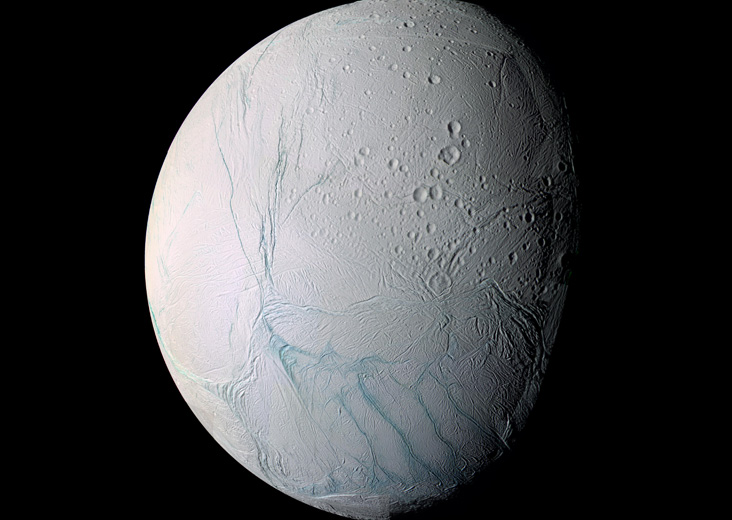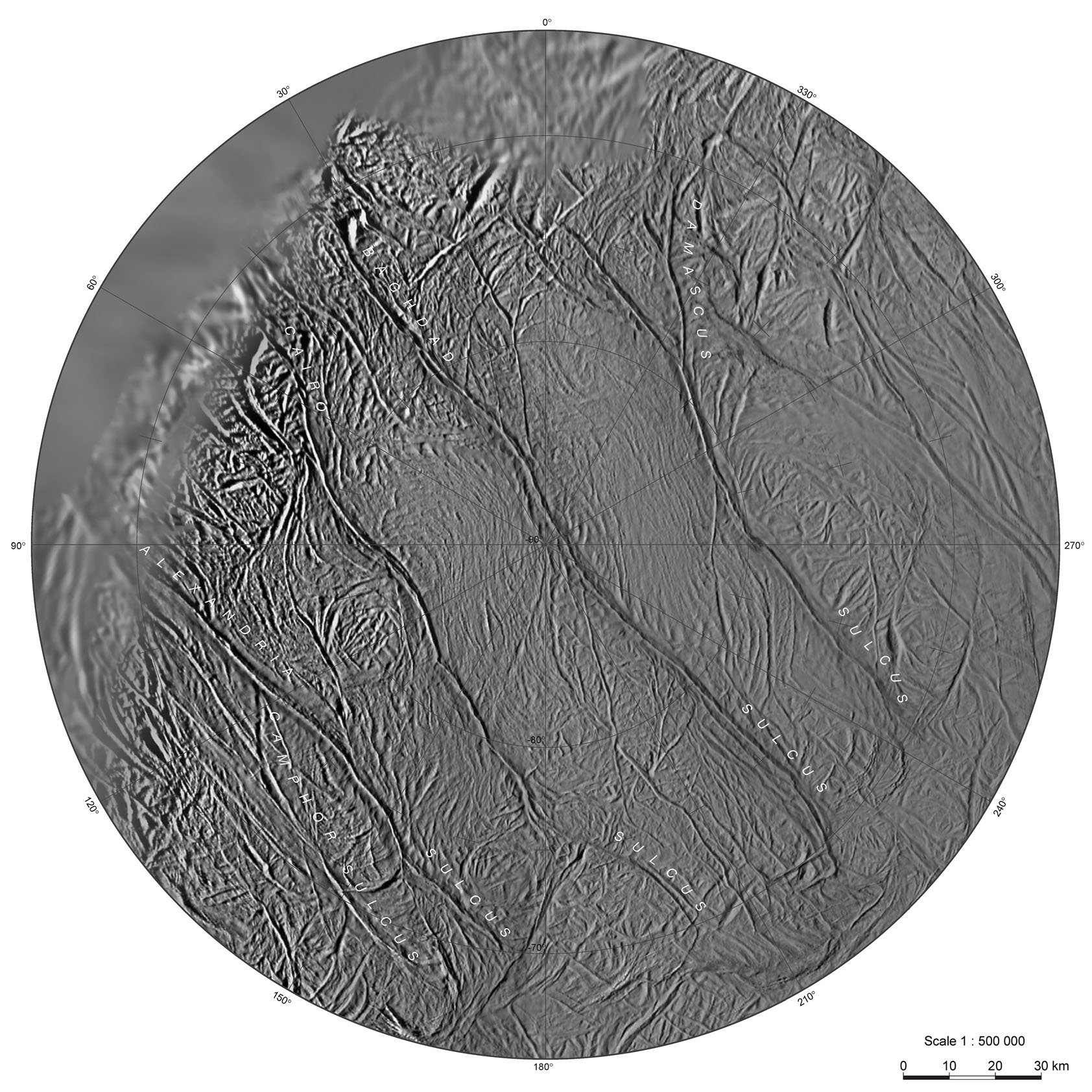How the ice moon Enceladus got its tiger stripes
Saturn’s ice moon, Enceladus, is one of the most promising worlds in terms of the search for places where extraterrestrial life might exist. Of course, as a reader of the Ice Moon series, you’ve already known that for a long time. Near its south pole there are deep fissures in its crust, through which water is constantly being forced outward. This allows researchers to look under the ice, which is up to 100 kilometers thick, without having to drill through it. A new study tries to explain the unusual appearance of these sulci, which are also called “tiger stripes.”
“First seen by the Cassini mission, these stripes are like nothing else known in our Solar System,” says Doug Hemingway, primary author of the article in Nature Astronomy. “They are parallel and evenly spaced, about 130 kilometers long and 35 kilometers apart. What makes them especially interesting is that they are continually erupting with water ice, even as we speak. No other icy planets or moons have anything quite like them.”
Together with Max Rudolph from the University of California and Michael Manga from UC Berkeley, Hemingway set up models that simulated the physical forces active on Enceladus in hopes of answering questions like: why are the stripes stationary and why do they form only at the moon’s south pole, but not its north pole? The answer given in Nature Astronomy is surprising: it was chance. The stripes could have formed at either of the two poles. The ice simply cracked first at the south pole and that’s why the cracks remain there.
Due to its eccentric orbit, Enceladus is heated from the inside. Gigantic Saturn stretches and squeezes Enceladus, so that its interior never cools down and freezes completely. These forces are strongest at the poles, where it is therefore also warmest. Thus, naturally the ice there is also thinnest. This stretching and squeezing leads to warming and cooling phases, so when Enceladus cools down again, part of the water freezes to ice, expands, and creates cracks. These appear fastest in places where the ice is thinnest.
According to the models, the Baghdad Sulcus must have formed first. Then the fissure stopped freezing shut. Water started to be continuously forced upward out of the ocean under the ice. Then it would refreeze and be deposited on the thin ice layer, adding another source of weight on the thin ice sheet – until, under the increasing load, the next fissure was created. According to the researchers, this explains the even spacing of the fissures. Saturn’s gravitational force also contributes to keeping the cracks open. In some sense, it just keeps scratching off a scab over a fresh wound, allowing it to continue to bleed.

